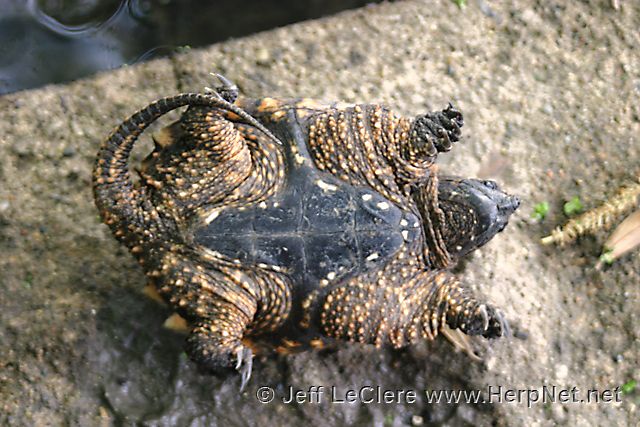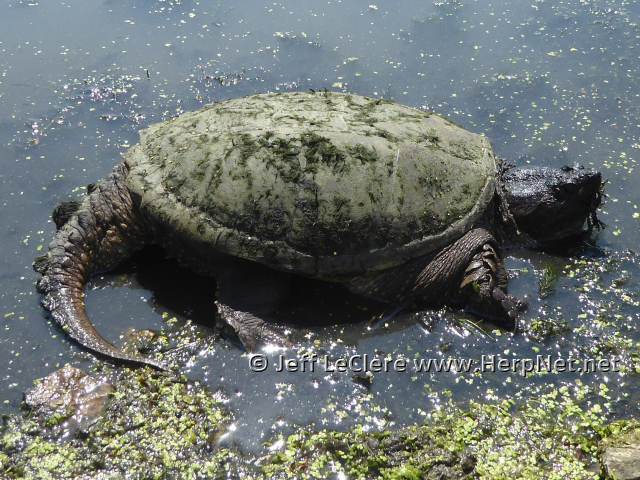Snapping Turtle (Chelydra serpentina)
by Jeff LeClere
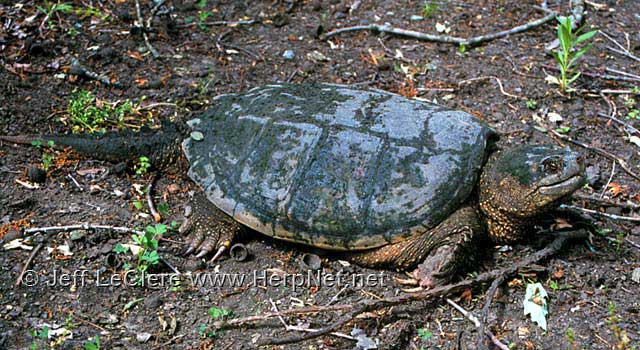
Status
Species of Greatest Conservation Need. LEGAL to take with a valid fishing license. These turtles may be trapped, taken by hand, hook and line, turtle hook throughout Iowa. The possession limit 100 pounds for live and 50 pounds for dressed turtles.
Description
This is Iowa’s largest turtle species. Average adult size is from 9 to 14 inches carapace length. Unlike most of Iowa’s aquatic turtle species, male snapping turtles grow larger than females. The males also have their cloacal openings positioned past the margin of their carapace edge. The strong, well developed carapace is brown, olive gray or black, but may be obscured by mud or algae. There are three lengthwise keels down the carapace. These are prominent in young specimens, but are obscure or absent in adults. The marginals are smooth on all sides except the rear in which they become like jagged teeth in feeling and appearance. The plastron is small resulting in a large amount of flesh exposed on the underside.
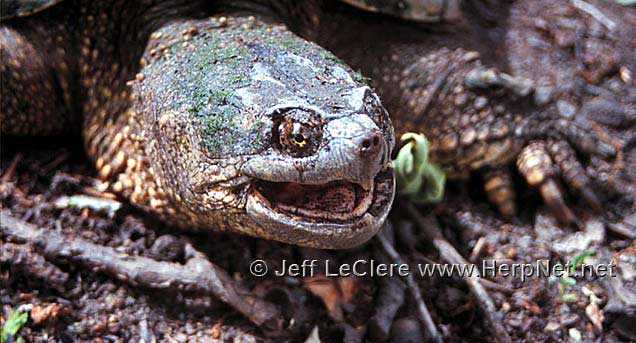
Snapping turtles may be quite variable when it comes to skin coloration, especially in immature turtles. They may be light brown to almost yellow , rusty orange, or reddish. The throat, limbs and ventral surface (including tail) are where this coloration is richest. These colors may be an enhancement due to diet, water quality, or soil type. However, adults found in the same body of water rarely exhibit these colors. adults are usually brown, gray, or nearly black. Neonate snapping turtles are very dark with some white flecking.
Young snapping turtles usually have chestnut brown shells with faint lighter lines radiating from the centers of each scute. All ages have strong jaws with a hooked beak, strong claws, and a long saw-toothed tail.
Subspecies
There are no subspecies of the snapping turtle, Chelydra serpentina, currently recognized.
Range
Statewide.
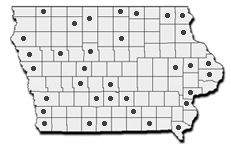

Habitat
The snapping turtle is found wherever permanent water exists. Lakes, ponds, rivers, streams, marshes, and water-filled ditches are used.
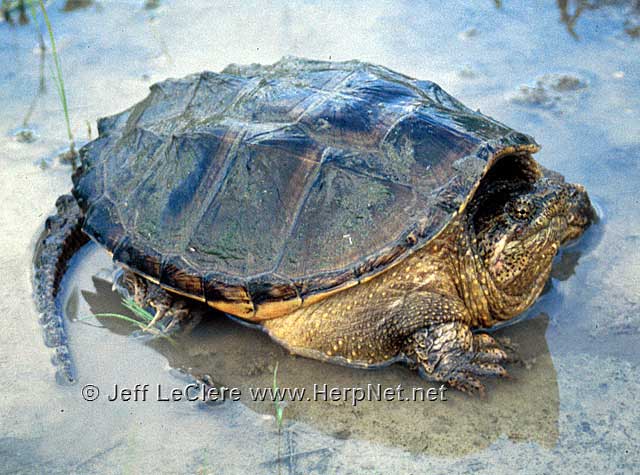
Habits
Snapping turtles (often referred to as “snappers”) are well-known for their extremely aggressive behavior. Their strong jaws are capable of giving a serious, painful bite, although the resulting damage is sometimes exaggerated. While very pugnacious on land, they usually try to crawl or swim away if they are confronted underwater. This is one of Iowa’s most aquatic turtle species. They only occasionally bask out of water, most specimens are seen basking in spring. I have seen rather large specimens climb out on small limbs overhanging the water to bask. They often bury themselves in the mud at the bottom of shallow waters with only their head protruding. With their long necks, they occasionally reach the waters surface and take in air through their nostrils.
In the evening and at night they become active and hunt for food. During periods of dry weather, snappers may move overland to search for new homes. Male snapping turtles become sexually mature at four or five years and females at six or seven years of age in Iowa (Christiansen and Burken, 1979).
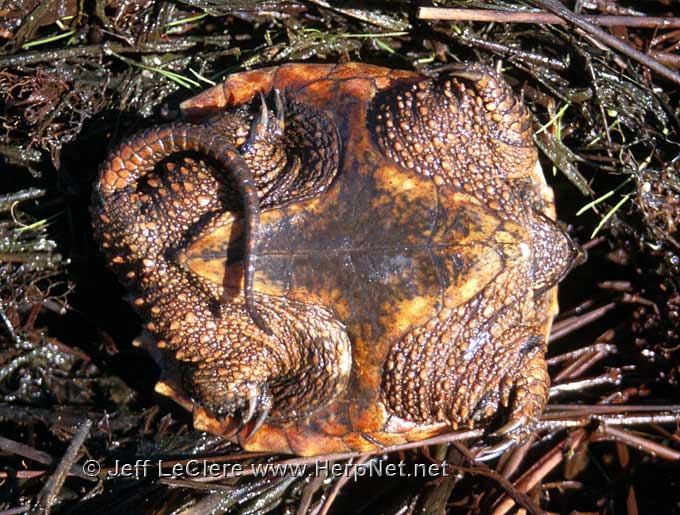
It is very common to see females moving (especially across roads) during the egg laying season in June. Females normally select sandy areas to dig nests. Riverbanks, shoulders of roads, driveways, and lawns are common sites. Females lay up to 30 eggs and covers the nest with soil when finished. The females then return to their homes. Nearly all the nests are destroyed by predators. The eggs hatch in about 50 to 60 days. Temperature during incubation determines the sex of the hatchling turtles. Lower temperatures produce mainly males and higher temperatures produce mainly females.
The young turtles are very vulnerable during their first few years of life. Most do not become very aggressive until they are over four inches carapace length. Snapping turtles grow most rapidly in June , July, and August (Christiansen and Burken, 1979). Snapping turtles become active in March, and overwinter starting in September. Snapping turtles can be seen overwintering beneath the ice on some clear lakes. The turtles may move a little during this period, but they generally do not eat. Snappers living in shallow bodies of water bury themselves in mud to avoid freezing.
Food
Snapping turtles are omnivorous. They eat anything they can catch and also consume various water plants. Small prey are swallowed whole; larger items are torn apart with the front claws and swallowed in pieces. Although there are reports of snappers consuming waterfowl, they do not pose a threat to game species – including fish. Snappers are usually too slow to catch healthy game fish. Sick or dead fish are primarily consumed. Like many other Iowa water turtles, snappers must eat most food underwater; their fixed tongue makes it very difficult to swallow out of water.
